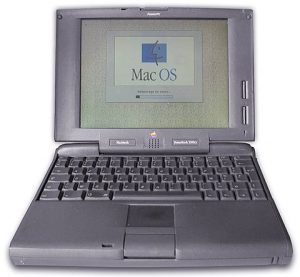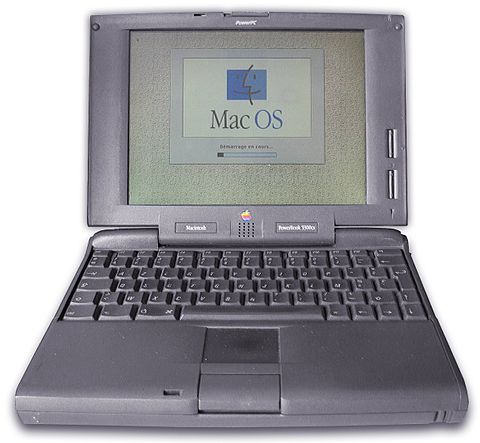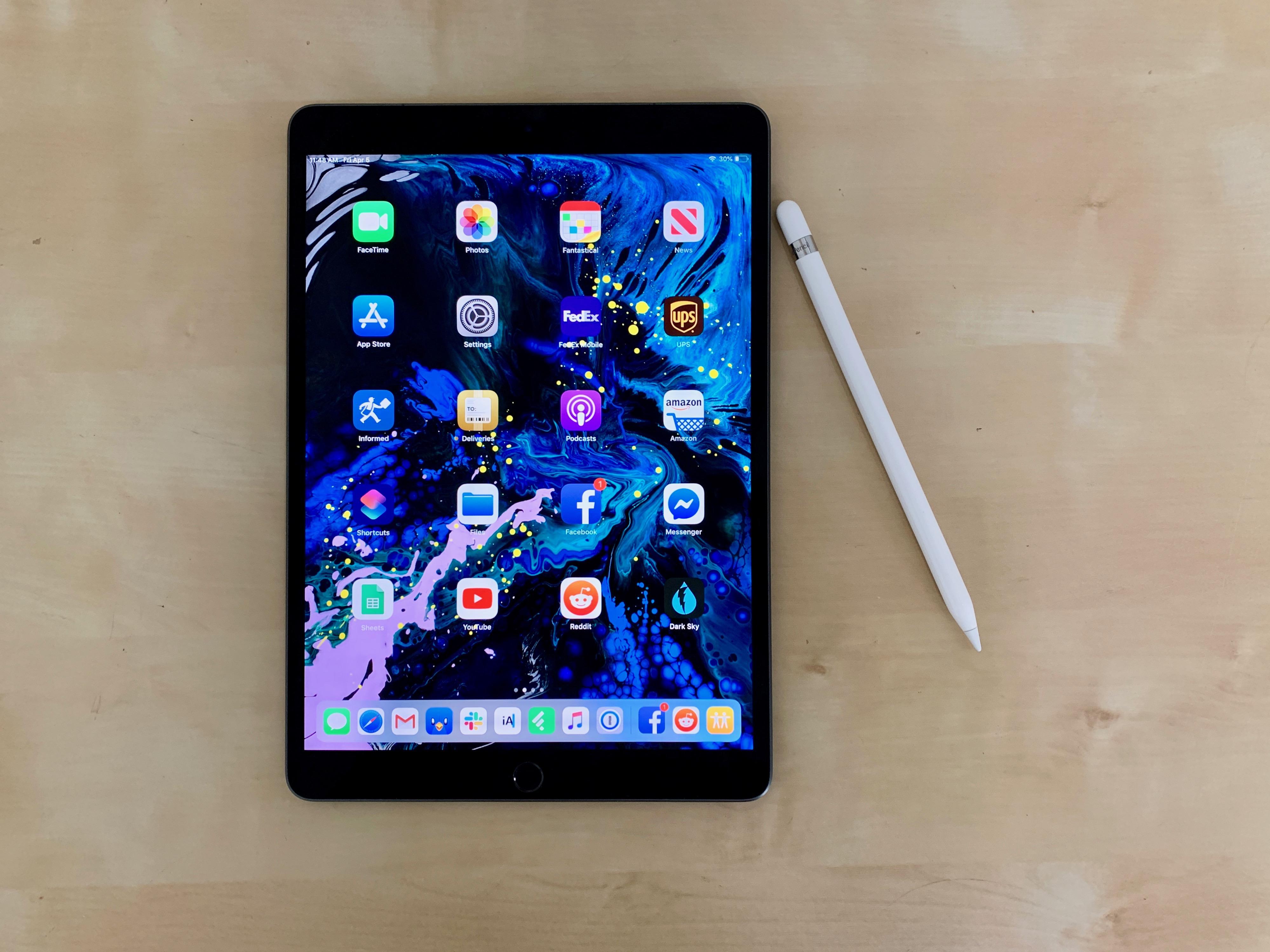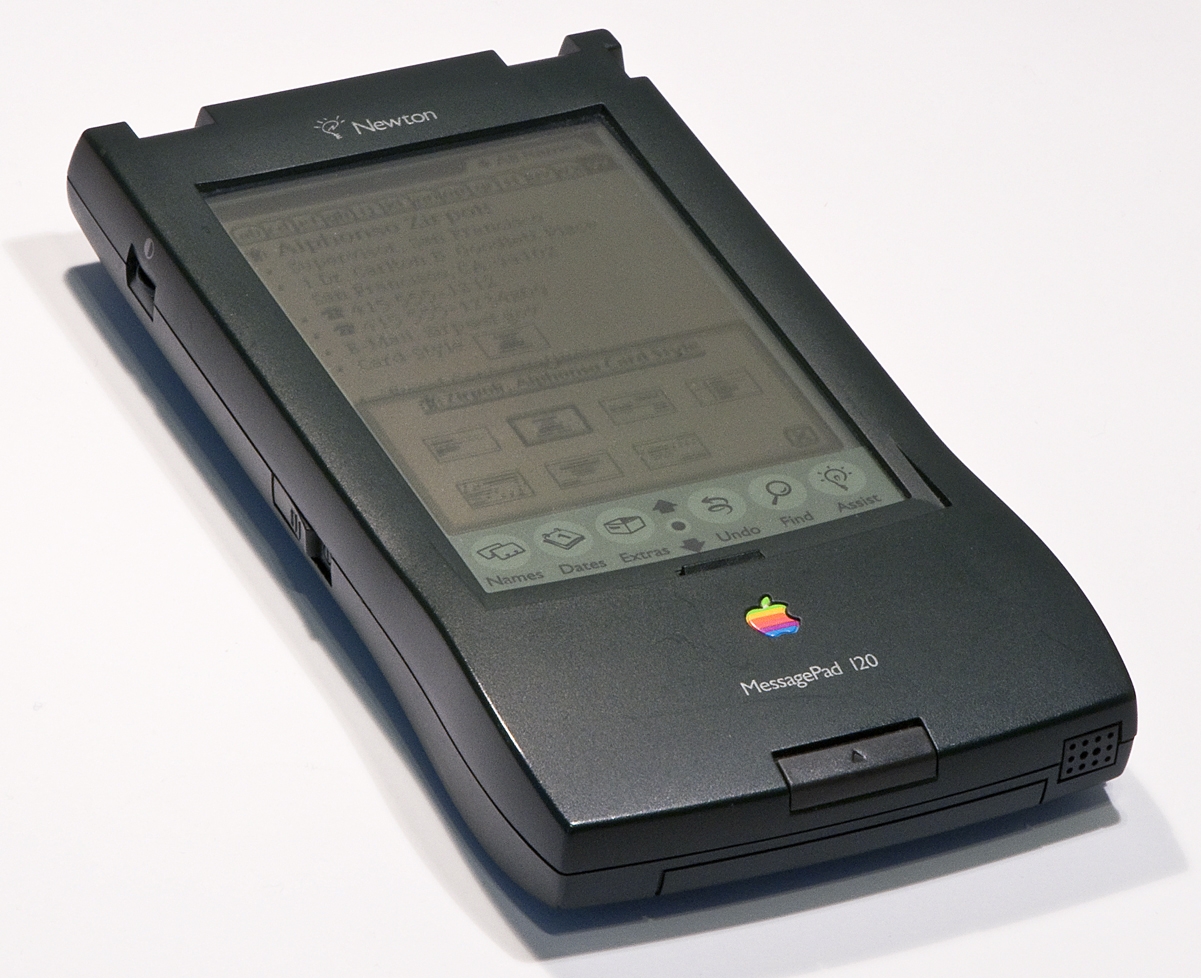
The PowerBook 5300 is the first generation of PowerBook laptops manufactured by Apple Computer to use the PowerPC processor. Released in August 1995, these PowerBooks were notable for being the first to feature hot-swappable expansion modules for a variety of different units such as Zip drives; PC card slots as standard; and an infrared communication port.[1] In common with most preceding Macintosh portables, SCSI, Serial, and ADB ports were included as standard. An internal expansion slot was also available for installing a variety of modules including Ethernet and video cards to drive a second monitor in mirroring or dual-screen modes.
Although a significant advance over preceding portable Macs, the PowerBook 5300 suffered from a number of design faults and manufacturing problems that have led to it being cited as among the worst Apple products of all time.[2] Amongst other issues, it was one of the first laptops to suffer negative publicity from battery fires,[3] and featured a hot-swappable drive bay with insufficient space for an internal CD-ROM drive.
There were four models in the 5300 series, ranging from the low-end greyscale 5300 to the deluxe, high-resolution, TFT-equipped 5300ce:
| Model | Display | CPU clock | Standard RAM | Retail price (US) |
|---|---|---|---|---|
| PowerBook 5300 | 640×480 pixel passive matrix greyscale LCD | 100 MHz | 8 MB | $2,300 |
| PowerBook 5300cs | 10.4″ 640×480 pixel passive matrix color LCD | 100 MHz | 8/16 MB | $2,900 |
| PowerBook 5300c | 10.4″ 640×480 pixel active matrix color LCD | 100 MHz | 8/16 MB | $3,900 |
| PowerBook 5300ce | 10.4″ 800×600 pixel active matrix color LCD | 117 MHz | 16 MB | $6,800 |
The PowerBook 5300 was designed during 1993 and 1994 under the codename M2. Compared with the preceding PowerBook 500 series, the 5300 was explicitly designed to be as small as possible (which precluded the use of a CD-ROM drive) and featured a more compact but less curvy design. Pop-out feet were used instead of the rotating rocker-style feet typical of earlier PowerBooks, and a slightly darker shade of grey was used for the plastic casing.[1] The PowerBook 190 used an identical casing and shared many features and internal components, but used the older and slower Motorola 68LC040 processor instead, which could be upgraded to a full PPC processor by swapping the logic board.
Video:
Here’s the actual item in my museum
<my photo>
The PowerBook 5300 basics:
Color: Black | CPU: PowerPC | Form Factor: Laptop | OS: MacOS 8 | Purchased: eBay | Ram: 8 MB | Series: PowerBook



